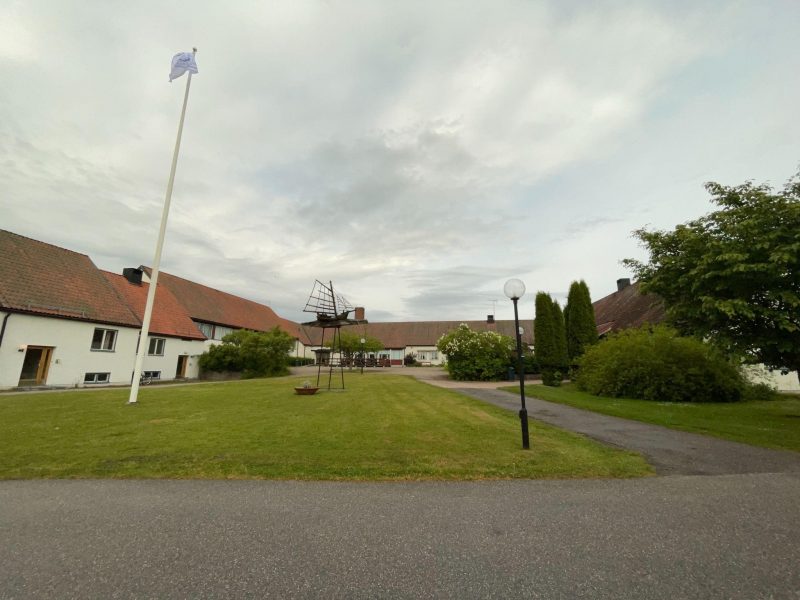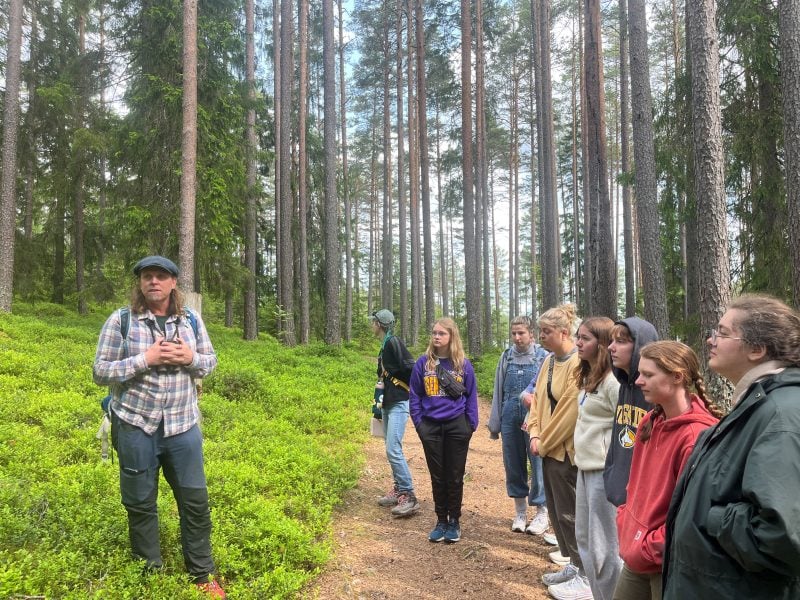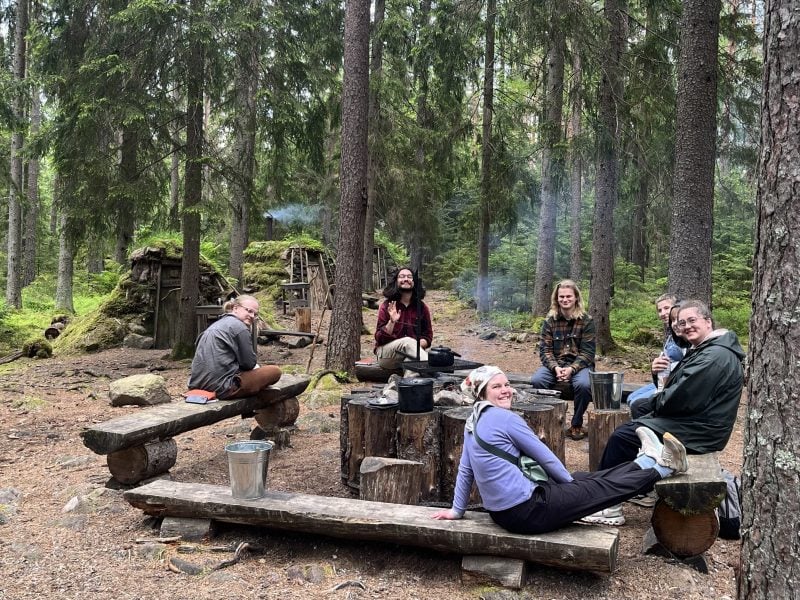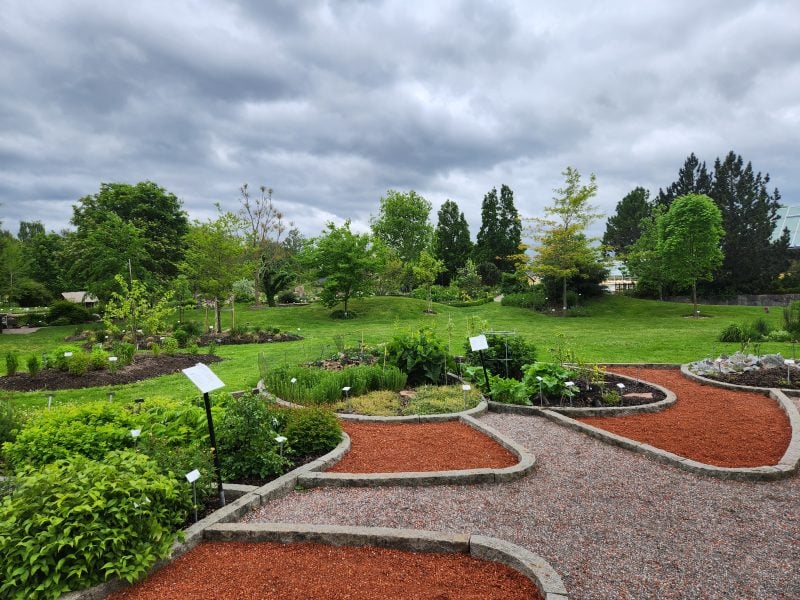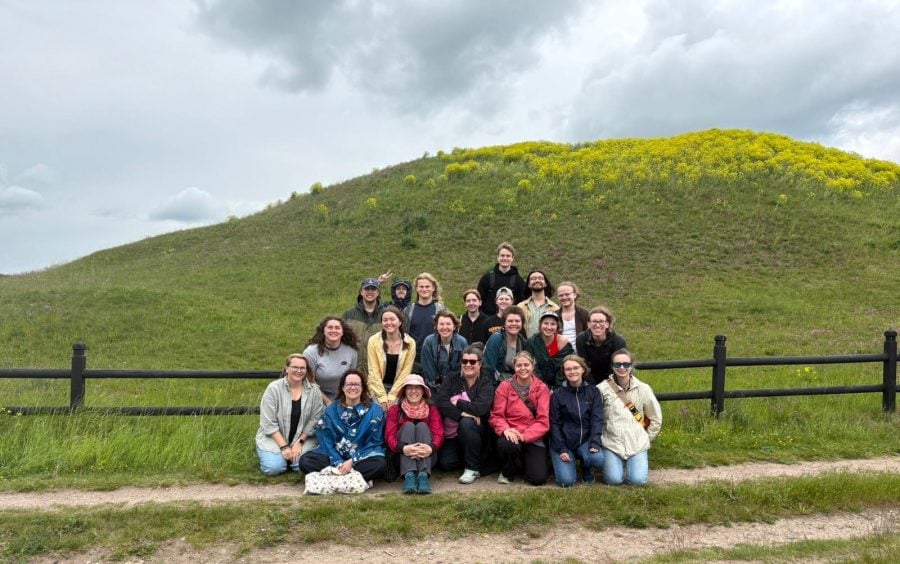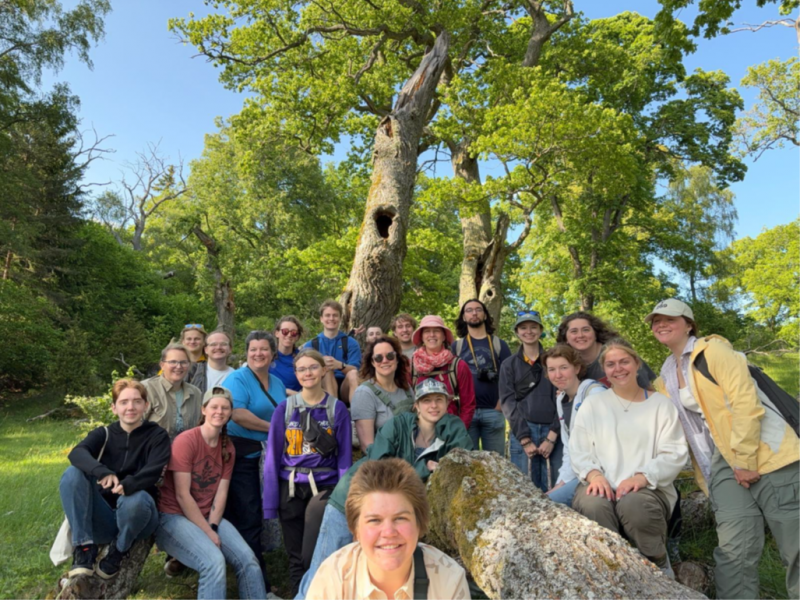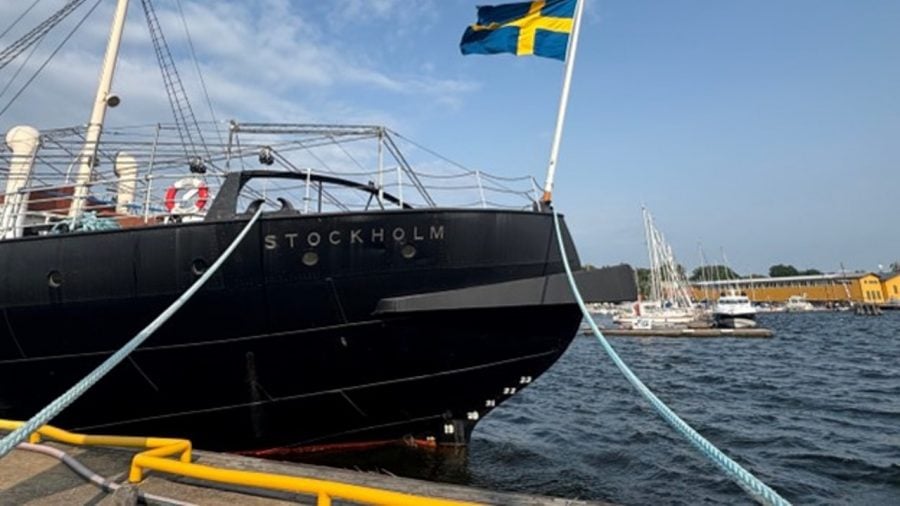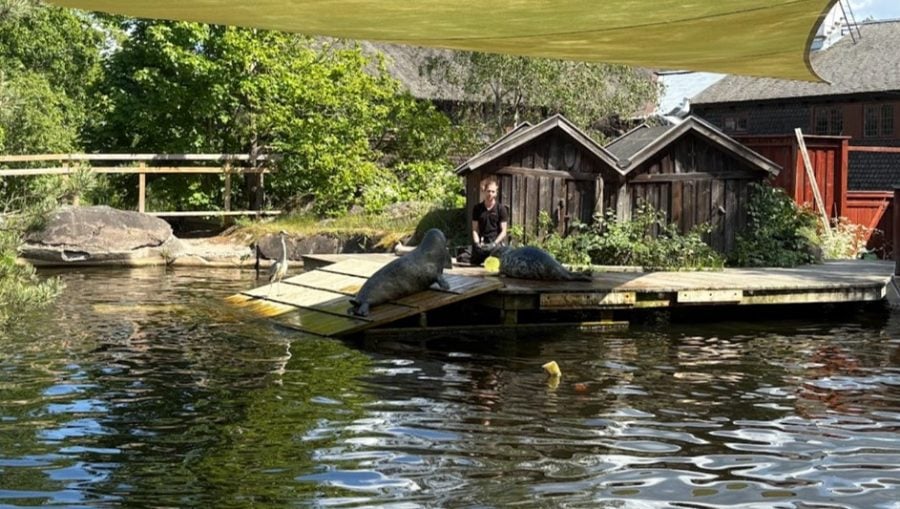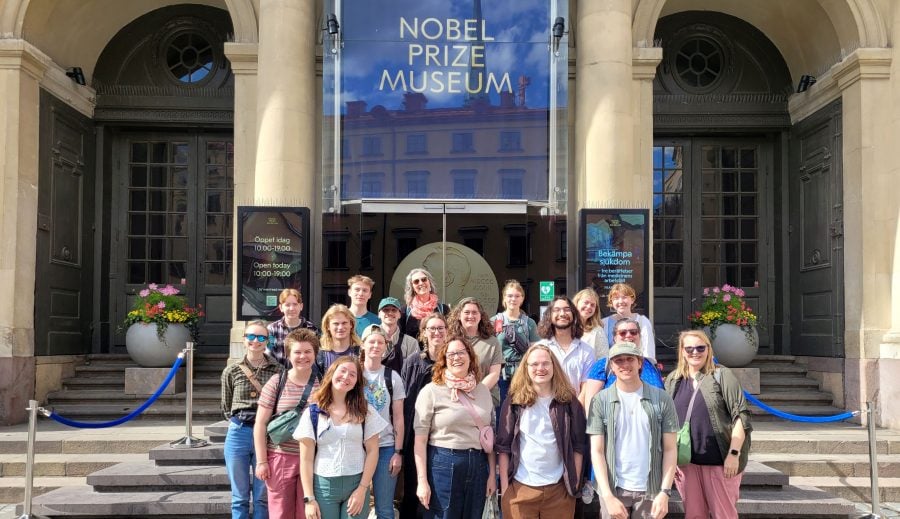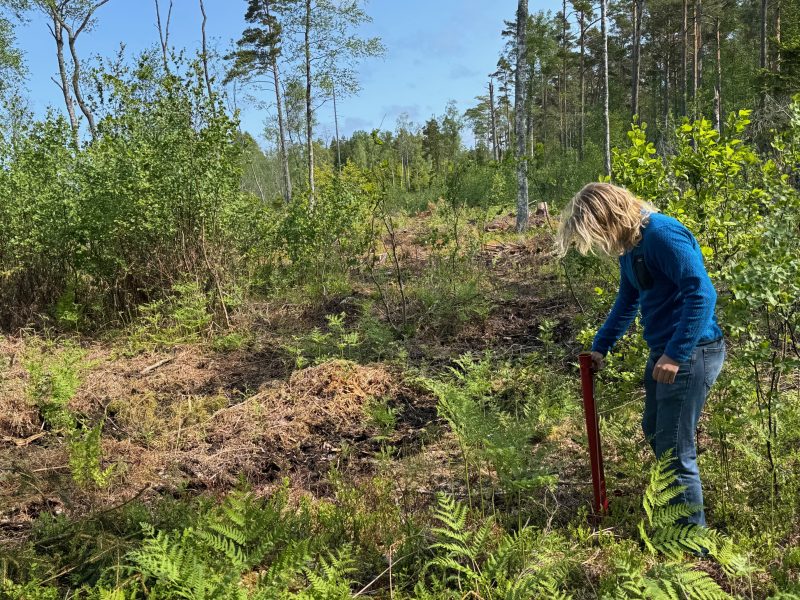
(Post provided by Paige Harsevoort, Image by Tara Bal)
Today was full of adventure! We started off the morning by loading up the vans and traveling to the home of Örjan Grönlund, a family forest landowner and a Sustainability Coordinator for Mellanskog, a forest owners association. We learned so much about his life and how he manages and maintains his forest. The thing that stood out to me most was a quote from him, “I wish I had more time. If I had more time, I wouldn’t have to pay people to do the job for me.” It stuck out to me because it made me realize that there are so many things he could have said he wanted more of (such as more time to plant more trees), but he chose time. It reminded me that we need to appreciate and cherish what we have and take care of the things we care about.
After visiting, he gave us a tour of his family’s house (which was amazing), then we got back in the vans and drove toward the Baltic Sea for lunch. We ate on the cliffs, watching a gorgeous scene of laughing gulls and frothy waves. Although it was quite windy, it was nice to have such a good view for lunch!
Once lunch was over, we went back to the folkhogskola to sit with Simon Sjostrom, an artist that specializes in decomposing animals and radio waves. It was a very special experience to get to ask and answer questions and have good conversations with him. His works are unique pieces of life, death, and endless possibilities.
The day went by fast, and was full of good forest walks and conversations!
